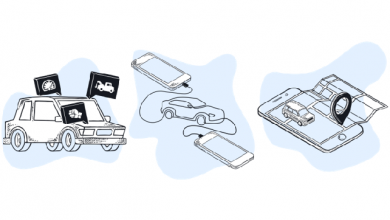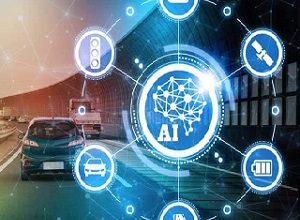Are we ready to hit the road with connected cars?
By Sudhir Tangri, Country General Manager & Vice President, Keysight Technologies.
By 2025, every car on the road will be “connected” in some way. The connected car combines the vehicle, communications, and the Internet of Things. Given the mission-critical safety requirements of modern vehicles and the need for interchangeable multi-vendor components to work together reliably, designers face more challenges than ever before.
 Self-driving cars are a technological advancement causing widespread wonder and they are getting closer and closer to becoming a viable method of transportation. Self-driving cars, are purely analytical, relying on cameras, radar, and other sensors to navigate. It sounds really fun, but that is where the security issue comes in. Once hackers get into the internet-connected car, they could disable the air bags, brakes, door locks and even steal the vehicle. Since these cars have multiple connection points, there are even more entry points for hackers.
Self-driving cars are a technological advancement causing widespread wonder and they are getting closer and closer to becoming a viable method of transportation. Self-driving cars, are purely analytical, relying on cameras, radar, and other sensors to navigate. It sounds really fun, but that is where the security issue comes in. Once hackers get into the internet-connected car, they could disable the air bags, brakes, door locks and even steal the vehicle. Since these cars have multiple connection points, there are even more entry points for hackers.
None of these hacks have yet been demonstrated with regular vehicles on the road. But they show how cyber security is becoming a big challenge to the automobile industry, especially as vehicles incorporate more and more driverless technology. One of the best ways to protect connected cars from this growing threat is by building security into the design of the vehicles. This means, for example, ensuring that there are no conflicts, errors or misconfigurations in individual components. Fully assembled cars should be tested more rigorously to ensure that the final product lives up against security hacks, using methods such as penetration testing, whereby systems are purposefully attacked to expose flaws. This in turn would mean better tools and standards that would force everyone in the industry to factor in security right from the start.
Applying radar technologies to advanced automotive helps drivers to avoid potential risks from other vehicles, pedestrians and objects on roads and makes self-driving cars possible. The major applications of automotive radars are advanced emergency braking, blind spot monitoring, lane change assist, adaptive cruise control, parking assist, front and rear cross traffic alert, stop-and-go, and more. Hence, Keysight provides various automotive radar solutions from design simulation to signal generation and analysis tools.
From the technology point of view, radar technology has been widely used mostly in the aerospace and defense industry earlier and during World War II, so it’s not brand new technology. Even for automotive radar research, the first projects happened in the 1970’s – that’s a long time ago.However, widespread application of radar technologies in the automotive consumer market is fast growing these days. It started with high-end passenger cars, but these days, more and more trucks and low-end passenger cars have automotive radar sensors mostly for better safety as well as more convenience (eg: Stop & Go at the traffic jam).
Automotive radar detects distance (range) and motion, including velocity and angle. Radar systems have several benefits. They work in almost every condition, use reflected radio waves to detect the obstacle behind other obstacles, and have fewer signal processing requirements. On the other hand, there are some limitations. For instance, radar cannot interpret what the obstacles are (eg: human, dog, another car, paper box, or even if it’s a huge heavy refrigerator dropped on the highway). It simply detects the presence of an object without providing information what it is. This is a key reason why radar may not be able to provide enough data characterization to enable a full autonomous driving system due to limited information about the detected obstacles.
As each sensing technology has pros and cons, the industry currently can’t just depend on a single sensing technology for autonomous driving research. However, radar technology plays more roles in Advanced Driver Assistance System (ADAS), which is already currently a tangible way to save more lives by using technology to mitigate human driver errors. It is a good bridging platform before fully autonomous driving cars come into real-life. Applications of ADAS include radar-based emergency braking systems, forward collision warning, blind spot detection, rear collision warning system, adaptive cruise control, and many more applications that help enable safer driving.
Connected cars are typically equipped with wireless access and WLAN. This allows the car to communicate via the internet with other devices, both inside and outside the vehicle, and with other vehicles and nearby infrastructure nodes.Connected cars share information on road and traffic conditions to allow nearby cars to take appropriate action. Many refer to this as V2X or “vehicle to anything” communications. Some of the wireless technologies used include cellular, LTE, LTE-Advanced, WLAN, Bluetooth, and near-field communication (NFC). 5G will also be used.
Though self-driven cars are something that we cannot ignore, as it is the next big thing, we should be prepared for it with the right support infrastructure. Technology giants, carmakers, startups and ride-hailing firms are already engaging themselves in a furious battle to dominate this emerging industry. Probably we will have to do multiple test drives before we hit the road with this one!


